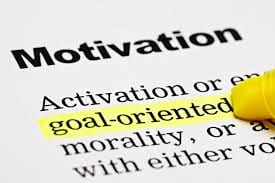Motivation – What is it and How can Motivaitonal Speakers use it to Influence Audiences
Motivation can be considered a psychological state that causes someone to take action toward a desired goal. Motivational Speakers can use this to improve many peoples lives and many aspects of business.
Motivation has been shown to have roots in physiological, behavioral, cognitive, and social areas. Motivation may be rooted in a basic impulse to optimize well-being, minimize physical pain and maximize pleasure, or to gain something that your mind or body craves. Example: To get a group of employees to work together, you may need to motivate each of them individually to see the value in helping the next person out. The motive could be the sense of humility you gain from helping another colleague or that when you help your colleague, more work gets done and which increases productivity, sales and happiness.
Motivational Speakers are people who speak to audiences to provide them with a new way to look at their motives. There are many different motives that motivational speakers concentrate on when speaking to audiences. Doug Dvorak customizes his presentations, making sure to concentrate on putting tremendous amounts of positive energy around the rewards of motives that the organization or company needs to bring to their work force or specific teams of the business, such as the sales team. Doug’s goal is to communicate a strategy with great clarity so that the audience as individuals and as a whole see’s their future with the organization in a different more positive light. Doug always inspires the audience to pull together and work as a team during his “pep talks” – which have been known to be contagious.
Great motivational speakers not only provide a great inspiring and motivational performance and story, but they teach the audience that when their true motives are satisfied, there are positive consequences, such as well-being and growth, this leads them to be further motivated, productive and happy.
Doug brings out the positive side of life in general. He shows the audience the brighter side of life and how to capture that every day. How to keep on keeping on.
There are two different types of Motivation:
- 1. Intrinsic (internal) motivation
- 2. Extrinsic (external) motivation.
Intrinsic motivation
Intrinsic motivation refers to motivation that is driven by an interest or enjoyment in the task itself, and exists within the individual rather than relying on external pressures or a desire for reward. People become curious and bored in the absence of reward. Intrinsic motivation is a natural motivational tendency and is a critical element in cognitive, social, and physical development. Organizations that are intrinsically motivated are more likely to engage in any given task willingly as well as work to improve their individual skills, which will increase their capabilitiesand overall productivity.
Teams are likely to be intrinsically motivated if they:
- Attribute their results to factors that they personally controlled.
- Believe that they have the ability to complete the task at hand.
- Are interested in truly mastering a topic, not just getting by.
Extrinsic Motivation
Extrinsic motivation refers to the performance of an activity in order to attain an outcome, whether or not that activity is also intrinsically motivated. Extrinsic motivation comes from outside of the individual. Common extrinsic motivations are rewards (for example money or grades) for showing the desired behavior, and the threat of punishment following misbehavior. Competition is in an extrinsic motivator because it encourages the performer to win and to beat others, not simply to enjoy the intrinsic rewards of the activity. A cheering crowd and the desire to win a trophy are also extrinsic incentives





